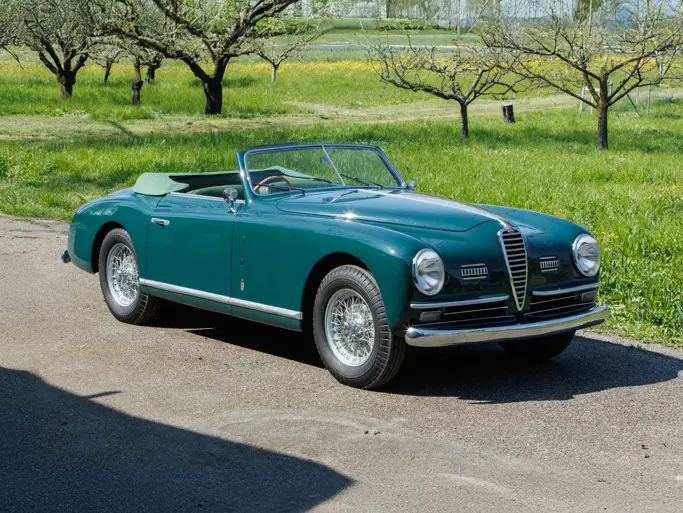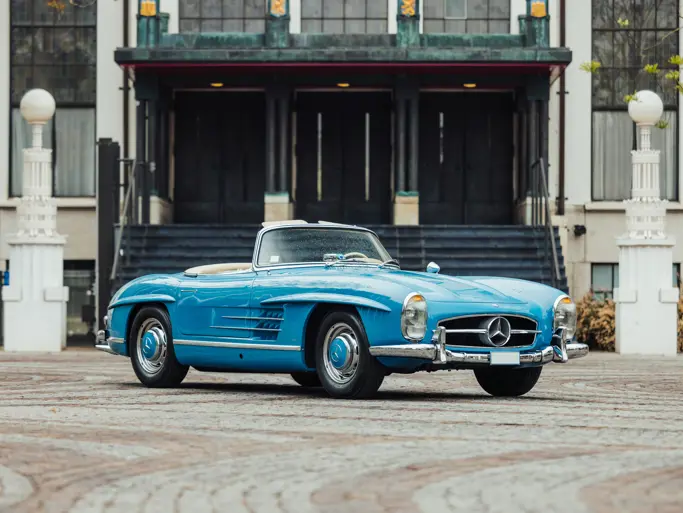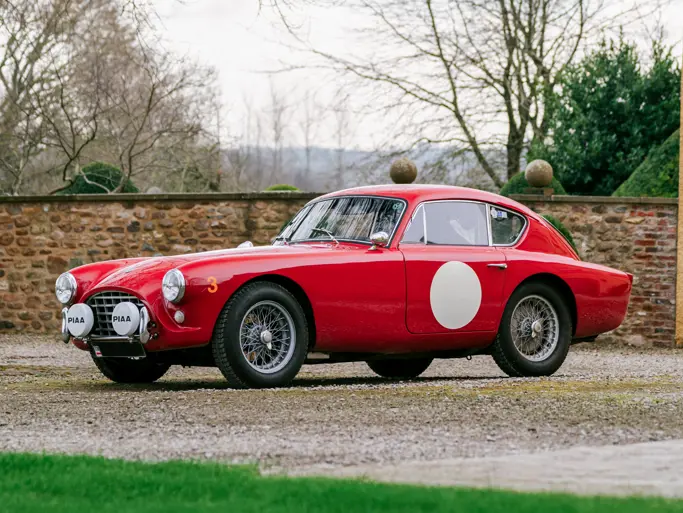In 1954, Bayerische Motoren Werk purchased Italian industrialist Renzo Rivolta’s Isetta minicar enterprise. BMW, a German manufacturer of motorcycles and sports cars before World War II, was in precarious circumstances at the end of the war. Their Munich factory had been destroyed, and their plant in Eisenach lay in Soviet territory. Car manufacturing did not resume until 1952, and it consisted of a single model, the 501. It was a large sedan that had acquired the nickname “Baroque Angel,” for its swoopy lines, but, despite the addition of V-8 power for 1954, sales languished.
In search of a lower-priced model, BMW’s management went to the other extreme, acquiring the rights to the tiny one-door Isetta. They improved the “bubble car” with four-cycle BMW motorcycle engines, and in the next 15 years, they sold more than 160,000 of them.
To create a low-priced four-seater, they enlarged on the Isetta theme, with a longer wheelbase, a right-side door for the rear seat, and a 582-cubic centimeter flat-twin engine from the R67 motorcycle. The transmission was a four-speed, like the Isetta, but a Saxomat semi-automatic arrangement was also available as an option. Front suspension was from the Isetta, as was the refrigerator-style front door, and new semi-trailing arm independent suspension was derived for the rear. About 35,000 were built from August 1957 to 1959. Although the 600 was only a minor note in BMW’s history, its chassis and rear suspension provided the basis for the more conventional 700, which was introduced in 1959, and many subsequent models.
This 600 is coming out of a large private Southern California Collection and has recently been cosmetically restored. During the refurbishment, new paint was applied, a new interior was added, and all trim pieces were re-chromed. This is a fine example of the unusual 600 and would be the perfect vehicle for any microcar enthusiast.

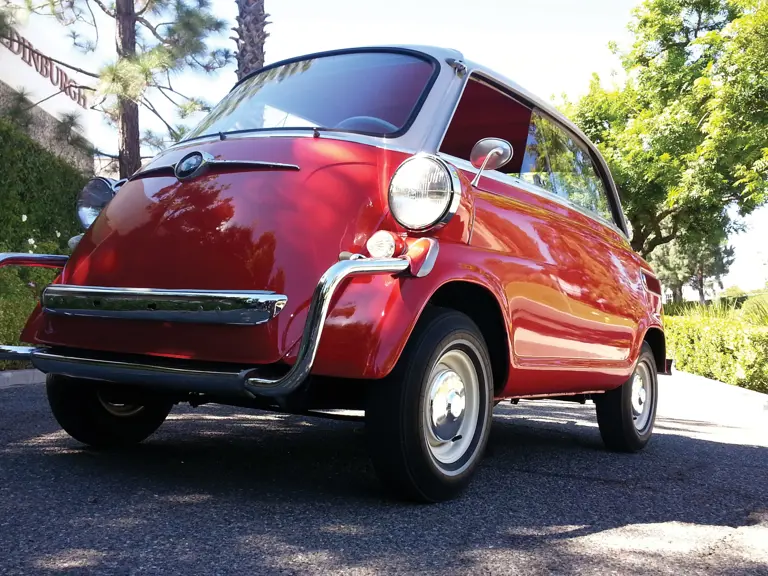
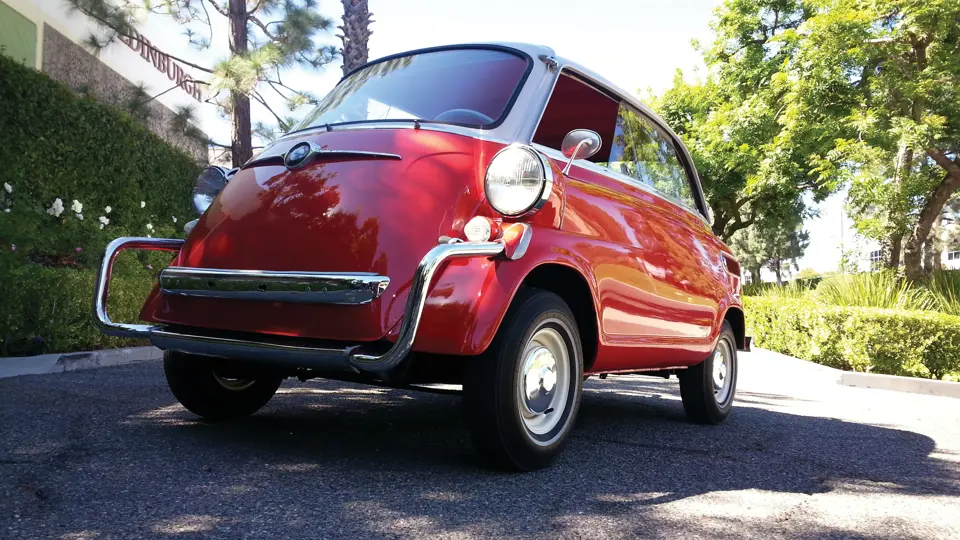
 | Santa Monica, California
| Santa Monica, California
